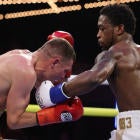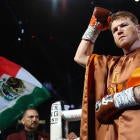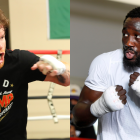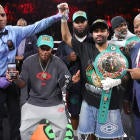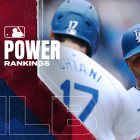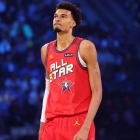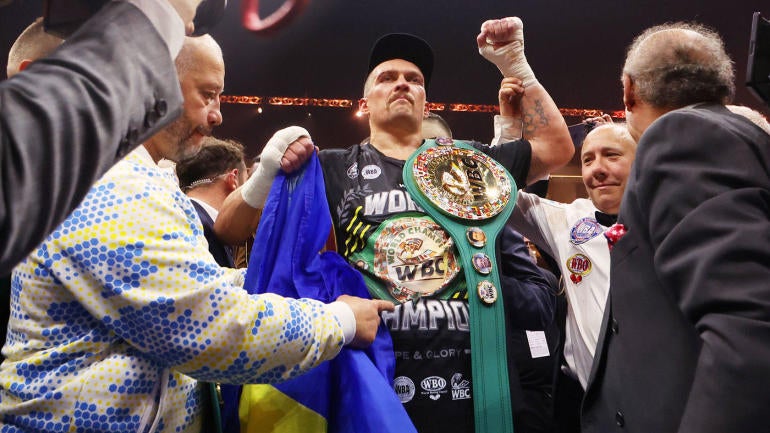
When the excitement of Daniel Dubois' fifth-round destruction of former unified champion Anthony Joshua died down last Saturday in the aftermath of their IBF heavyweight title clash at London's Wembley Stadium, a moment of reflection was in order.
In the long and decorated history of heavyweight championship boxing, which dates back 136 years to the bare-knuckle days of John L. Sullivan, there have been two eras -- separated from each other by a mere 10-year gap -- which most often receive recognition as the two greatest golden eras of the division: the 1970s and 1990s.
While heavyweight boxing has long created historically relevant champions and meaningful rivalries across many decades, few other eras can compete with the sheer volume of both of these eras. Both decades featured a gluttonous amount of elite depth, Hall of Fame talent and the kind of overwhelming personalities who became household names far beyond the confines of the fight game, or professional sports, for that matter.
The 1970s featured Muhammad Ali, Joe Frazier, George Foreman, Ken Norton, Larry Holmes and Earnie Shavers. It also produced the type of superfights that are known more by their catchphrases like "The Fight of the Century" (Frazier-Ali I), "The Rumble in the Jungle" (Ali-Foreman) and "The Thrilla in Manilla" (Ali-Frazier III).
The 1990s, meanwhile, were no slouch either from the standpoint of name value or rivalries as Mike Tyson, Evander Holyfield, Lennox Lewis, Riddick Bowe, Foreman and Michael Moorer ruled the decade just as pay-per-view evolved to become the preferred viewing method for fans from the confines of their own homes. This decade also featured extreme depth from the second-tier level of top heavyweights like James "Buster" Douglas, Tommy Morrison, Ray Mercer, Frank Bruno, Shannon Briggs, David Tua and Donovan "Razor" Ruddock, among others.
So, what exactly does all of this have to do with Dubois' thrilling upset of Joshua in front of an intoxicating crowd of over 98,000 people? It's a fair question.
While some heavyweight eras fall neatly between the 10-year starting and ending of a traditional decade, others -- like this era -- feature more overlap. So, if we consider the start of this era to be Tyson Fury's clinical upset of long-reigning champion Wladimir Klitschko in 2015 for his trio of belts, it may have taken until Dubois' breakthrough victory to realize how much fun and historically relevant the past nine years at heavyweight has actually been.
Has this era been good enough to place it on par with the two decades mentioned above? Sorry, but even as I sit here still drunk on recency bias from Saturday and just seven months removed from the epic Oleksandr Usyk-Tyson Fury undisputed championship match (with their rematch set for December), even I can't go that far in placing today as equally on par with the two of the greatest decades overall in the sport's history.
But that doesn't mean that today's current era isn't among the most exciting stretches the division has ever seen.
Sure, it probably helps that Fury's 2015 win brought a close to what was, quite possibly, the worst era heavyweight has ever known as the Hall-of-Fame Klitschko brothers, Wladimir and Vitali, ruled dominantly over an era, beginning with Lewis' 2004 retirement, which was painfully bereft of marketability (especially in the U.S.), quality contenders or tangible threats to the throne. But that's only part of it.
The real reason why this renaissance era of super heavyweights -- both, in terms of their physical size and their personalities -- is how fun the past nine years has actually been, helped in large part by the evolution of social media.
This era's elite names like Usyk, Fury, Joshua and Deontay Wilder are among the most unique and charming group of personalities the division has seen at one time. And while anyone critical of this era can certainly point out that the division's two most marketable matchups -- Joshua-Fury and Joshua-Wilder -- never even took place due to boxing politics (with the latter likely having already missed its window of viability), even that isn't enough to suppress how much fun it has actually been.
Are today's heavyweights as skilled and battle-tested as the champions of decades before? That's certainly a hard sell, particularly because of how much the sport's importance within the mainstream has fallen over the same span as boxing has been reduced to much more of a niche sport unlike the 1970s, for example, when a boxing gym could be found (in theory) on nearly every street corner of a major American city.
But those changes in cultural evolution have also produced athletes of much more impressive physical regard, with heavyweight being no different due to the advancement of everything from training and recovery methods to performance-enhancing drugs and overall size. Today's heavyweights might not be as active as those preceding them in history yet, then again, can we imagine any great champion of the last 100 years trying to deal with Fury's speed and size at 6-foot-9 or the 6-foot-3 southpaw Usyk's mastery of footwork and sleight of hand?
This era has also produced an intriguing amount of parity outside of the individual dominance shown by Usyk and Fury. Look no further than Joshua and Wilder, two heavyweights who enjoyed long stretches of success as champions yet were vulnerable enough on any given night to have to truly overcome the legitimate threat of defeat in order to get their hands raised.
For as much as the start of this era was hurt by how deep the division wasn't, the ensuing years have created a handful of interesting side players like Dubois, Joseph Parker, Zhilel Zhang, Joe Joyce, Andy Ruiz Jr., Luis Ortiz, Alexander Povetkin, Dillian Whyte and Kubrat Pulev. And what is a great era without the type of unforgettable fights, particularly in the boxing-crazed U.K., where Joshua and Fury helped create an expectation of high theater within the party atmosphere of an outdoor stadium show?
There was 2017's Joshua-Klitschko, which would have been a cornerstone fight in any era, the incredible Fury-Wilder trilogy and February's Usyk-Fury I (which crowned the first four-belt, undisputed champion in division history). And then there were those unforgettable singular moments like Ruiz arriving as a late replacement to spoil Joshua's first fight on U.S. soil at New York's Madison Square Garden in a 2019 upset and a quirky Fury fight against MMA star Francis Ngannou in a 2023 non-title bout that nearly produced one of the biggest upsets of all-time.
No, this isn't your father's heavyweight division. But that's also no longer a bad thing, particularly because we are seemingly -- due to the age of its top competitors -- at the tail end of one of the most exciting eras that the big men of boxing have ever produced.
If the old adage often said by the late boxing historian Bert Randolph Sugar is true that as the heavyweight division goes, so does boxing, it's time we realize how much fun the past nine years has actually been atop this sport and how much of that we owe to a group of hulking, charismatic warriors who continue to put it all on the line for a shot at adding their names to history.
Enjoy it while it lasts.
![[object Object] Logo](https://sportshub.cbsistatic.com/i/2020/04/22/e9ceb731-8b3f-4c60-98fe-090ab66a2997/screen-shot-2020-04-22-at-11-04-56-am.png)








